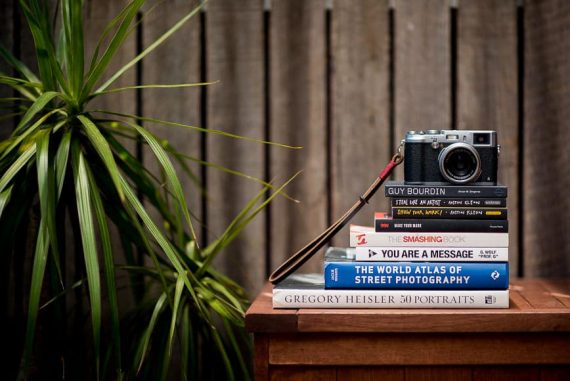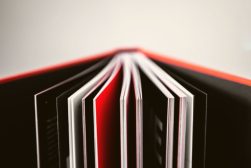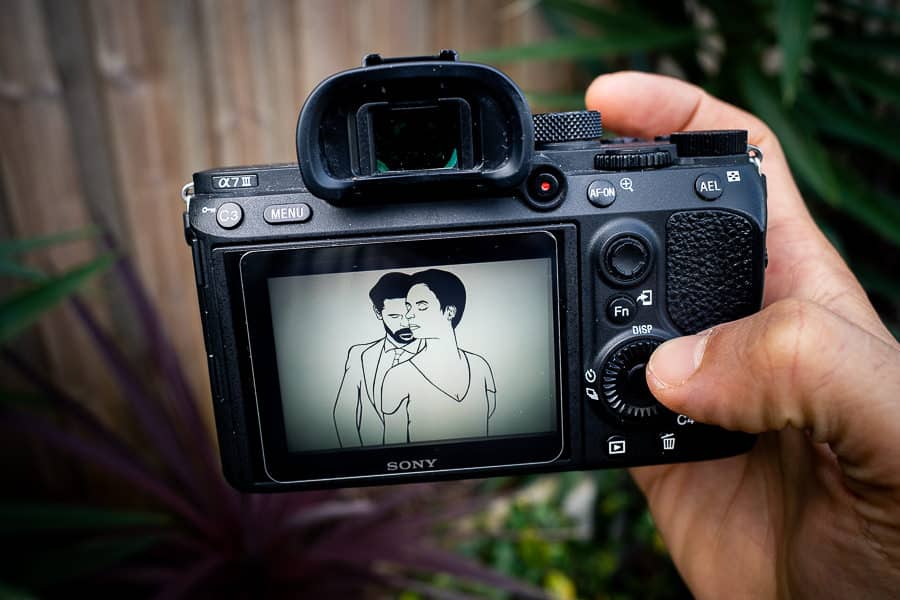









Richard Barrett
Animal & Wildlife | Last Updated: February 28, 2023
My name is Richard Barrett, I’m a wildlife photographer living in the north of England. I started my career as a Structural Engineer with my company that designed and built steel-framed buildings, warehouses, offices, supermarkets and hospitals.
I decided to sell up and retire early, to try my hand at something completely different, wildlife photography!
My photographic background was in a completely different genre as I was brought up in the days of Apollo Moon landings. Being fascinated by the space program I started photographing the heavens, particularly the Sun and the Moon.
The Sun is a very tricky subject, photographing it is all about getting rid of excess light and heat. I used an old plate camera attached to a telescope. The black and white images were then processed and printed in an old-style dark room.
Getting back into photography after a break of a few decades I had to enter a new digital realm. The underlying principles were very much the same, but there was a lot of new stuff to learn.
Wildlife photography is hours of patience interspersed with minutes of frantic action. You never know what is going to happen next, but you must be ready to capture it.
The adrenaline rush and thrill of getting the shot are what captivate me.
In the early days, I used to go on group photo tours and meet lots of more experienced wildlife photographers. I often came back with a list of new kit I needed and new wildlife hotspots to visit.
Now, it’s usually the other way around as I often get asked for advice on kit and locations.
My website www.wildandwonderful.org also generates lots of similar questions:
Where’s the best place to see Polar Bears?
When is the best time to go?
What gear do I need to take?
This led me to put it all down in a book “Wild World – Photographing Iconic Wildlife”. Illustrated with my photos, the book describes the best places to visit for nine iconic species and is peppered with photographic tips.
Every photo is captioned with detailed information on location, camera, lens and settings. It is available worldwide from online retailers and good bookshops.
One chapter of the book is devoted to Jaguars and I recently went back to all the places I recommend in the book on an extended trip to the Pantanal in Brazil, one of the last strongholds of the Jaguar.
The Pantanal is the world’s largest wetland. It’s a place just teaming with wildlife. Besides the charismatic Jaguar, you have its prey species like the Caiman and Capybara plus many more photogenic predators and a rich diversity of bird life.
I needed to select my kit carefully as the major items had to fit into my carry-on luggage, as I don’t usually trust airlines and airports with fragile gear in checked luggage. While it was the dry season, with dust being an issue on the vehicle-based sections, thunderstorms can hit during the afternoons, so I also needed appropriate protection for my gear.
Nikon Mirrorless Digital Camera Z9 – I love this camera and I took two of them with me on the trip to the Pantanal. It is a robust camera that can handle extreme temperatures, rain and high humidity effortlessly.
I much prefer the Nikon Z9 to my previous DSLR, the Nikon D6 (still a superb camera) with the higher frame rates, superb focus-tracking, live histograms, better VR and no blackouts that help me with a high keeper rate.
Both of these cameras were set up with my two long telephoto lenses.
Nikon Mirrorless Digital Camera Z7II – a much smaller and more compact camera that I take along with the Nikon Z9s. I use it for wider angle work, teamed up with the 24-120mm lens.
Nikon Z 800mm f6.3 S – a wonderful new addition to Nikon’s telephoto lens range. It is relatively light and it is a super sharp long lens. I carried this onboard the plane inside its Nikon carrying case.
It accounted for around a third of my shots, allowing me to get something a bit different to most photographers who are using shorter glass.
It is easily handholdable, although when practical I use it with the monopod which gives better stability allowing slower shutter speeds and consequentially lower ISOs.
Nikon 180-400mm f/4E AF-S ED VR – this is one of my go-to lenses on every trip with a built-in teleconverter and a Nikon FTZII lens adapter. This unit is super sharp and versatile, giving me a range from 180mm to 560mm.
Flexibility is critical for wildlife photography as you need to adapt to the situation as it evolves in front of you. I can engage the teleconverter in less than a second and don’t have to worry about dust or moisture contamination that you can get with traditional teleconverters.
The lens gives me beautiful bokeh, which is often not the case with smaller prosumer zooms. I loved it with the Nikon D5 and Nikon D6 cameras, and it is just as good with the adapter on the Z-series cameras. I used this lens for up to two-thirds of my shots.
Nikon Z 24-120mm f/4 S – in a small minority of cases a wider angle is required mainly for the ‘animalscape’ photos. I have this lens mounted on my compact Nikon Z7II camera and can put down the big glass and just grab it if the opportunity arises.
Nikon EN-EL18d – a spare battery or two for the Nikon Z9. Sometimes I take over two thousand photos in a long productive day and even though the battery can handle up to five thousand photos it is always better to be prepared.
Two Nikon battery chargers and leads for Nikon Z9 batteries. They are light and easy to include in the luggage with one always in my carry-on. I can charge batteries simultaneously and have insurance if one charger fails for any reason.
Hahnel ProCubes battery charger and lead for Nikon Z7II batteries, a quicker charger than the Nikon one.
2 x Card Safe with 6 x Delkin Black CFExpress Cards 128GB/150GB in each. The Delkin Black is my preferred card for the Z9. I can shoot continuous bursts in RAW with these and never hit the buffer.
I carry enough cards for the whole trip, and even though I back up my cards along the way, the image always stays on the card. That way, if my backup is not working for some reason, I still have the image on the card when I get home.
Really Right Stuff Monopod with Wimberley Monopod Head – I use this a lot from vehicles on game drives, or from boats as I did on the trip in the Pantanal. It allows me to use much slower shutter speeds than when hand-holding, and this can be critical in poor light situations.
Often you have an animal in front of you, and you need to be ready for the action. Having the camera mounted on a monopod makes this much easier.
I like the Wimberley Monopod head as the lens is perfectly balanced and stays at any angle without needing to tighten the locking knob. This leaves you free to move it quickly if the need arises.
I always take care when changing lenses to hold the camera pointing downwards and to change everything very quickly. Once a lens is attached to the camera, I often go the whole trip without removing it until it’s time to fly home.
I rarely need to clean the sensor, but I know from experience that I occasionally have to so I always travel with these items, just in case;
Lenspen SensorKlear loupe, Lenspen Rocket blower and Green Clean full frame sensor cleaners.
For lens cleaning a simple lens cloth or the rocket blower does the job, but I also use Green Clean lens cleaners for trickier situations.
To protect my gear I take 2 x waterproof/dustproof sleeves from Wildlife Watching Supplies. These allow me to keep the cameras and attached telephoto lens dust and moisture free. I use a Lenscoat Waterproof lens sleeve for photographing in heavy rain.
A roll of large plastic bin liners comes in handy to protect both camera bags in a downpour!
Apple MacBook Air 13”, Magic Mouse, Charger and lead – A super light and fast computer for doing backups and checking my photos when travelling. I do very little processing on a trip, as I prefer to do that back home with a big screen and with the whole set of images from the visit.
However, I do need to check during the trip that everything is working fine and see what I have got and what I still need to get.
Velokg CFExpress/SD card reader – this is the best card reader I have found as it does both types of cards my cameras use and it is compatible with most card brands.
SanDisk 4TB Portable SSD – I switched to SSDs a couple of years ago as they are far more reliable, faster and lighter than hard drives. I can get the whole trip onto this drive and then use it when I get home to process the images.
ThinkTank Roller Camera bag ‘Airport International V2.0′ – On this trip, I didn’t have to carry my gear on hikes as all photography is from boats or vehicles. This bag is perfect as it’s the standard size for airline carry-on and has wheels, making it easy to take through airports.
Swarovski Binoculars EL 8.5×42 – beautifully sharp binoculars that are essential for wildlife spotting.














